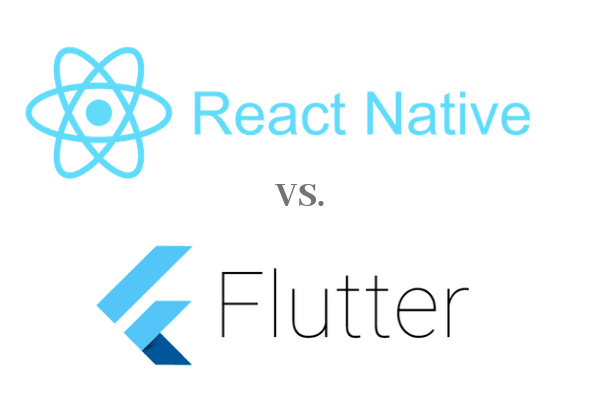React Native vs Flutter: Which Cross-Platform Framework is Better?
 In recent years, cross-platform mobile development has gained popularity because it enables you to develop mobile applications that run on more than one platform. Developing natively for iOS and Android is very time-consuming and expensive. In fact, developing native mobile apps for more multiple platforms can extend the development process, and by extending the process, you would be doubling or tripling your development budget.
In recent years, cross-platform mobile development has gained popularity because it enables you to develop mobile applications that run on more than one platform. Developing natively for iOS and Android is very time-consuming and expensive. In fact, developing native mobile apps for more multiple platforms can extend the development process, and by extending the process, you would be doubling or tripling your development budget.
In contrast, cross-platform development reduces the time spent on developing mobile applications by allowing you to create a mobile app using a single code base that is shared across multiple platforms.
There are many cross-platform frameworks available today, which are worth discussing. Today, we’ll be comparing React Native and Flutter.
React Native vs Flutter
Facebook previously introduced us to React Native in 2015. React Native is a Javascript framework for mobile developers building cross-platform mobile applications. With React Native, you can develop mobile apps that are indistinguishable from native applications using Swift, or Objective C, and Java. This framework features built-in components and APIs essential to developing innovative mobile applications.
This past year, Google introduced an open source framework for helping mobile developers build cross-platform mobile applications called Flutter. In contrast, to React Native, Flutter uses a language called Dart. Flutter is currently in Beta, and only a hand full of developers have used the framework for building mobile applications.
Which is Better?
In this case, both cross-platform frameworks are relatively new technologies. Previously, companies were faced with a choice between hiring a development company who specialized in the iPhone or Android. This was often priority based, with considerations given to the user market and their internal development budget. While React Native is a better option for both learning as a mobile app developer and adopting as a company, let’s compare both frameworks and see which one is better for developing mobile applications.
React Native and Flutter – Performance
Flutter is technically faster than React Native as it doesn’t require the Javascript bridge to interact with native components. Plus, the use of Dart gives Flutter an advantage over React Native. However, the difference in speed is not noticeable. Here at Parsed, we have worked on many mobile projects for clients using React Native, and not once have we had any performance issues developing mobile applications for both iOS and Android.
Javascript vs. Dart
Both React Native and Flutter use different programming languages, Javascript and Dart. While Flutter uses Dart, it isn’t used much outside of Google. In fact, Dart is still a relatively new programming that Google just created. GitHub announced that Javascript is the most popular and used programming language as of 2018.
While learning a new programming language, like Dart, isn’t a tedious task for mobile developers, there is a bigger talent pool of individuals that know Javascript. In other words, it’s not hard to find a Javascript developer. Plus, Javascript receives superior support from web-browsers, server, and mobile.
React Native is Industry Recognized
Being a matured cross-platform framework based on a well-known programming language, React Native has found its way in Fortune 500 companies, such as Bloomberg, Tesla, Uber, Walmart and many more. If you’re curious to see what these companies accomplished with React Native, check out this React Native showcase. Google just created Flutter last year, and we have yet to see Flutter in the spotlight.
React Native Libraries
Whether this is a trend or now the new norm, React Native is undoubtedly popular among mobile developers worldwide. Not only you have access to many libraries, but you can also use lots of third-party libraries too. Plus, it has enormous community support.
Flutter, however, is still in its infancy and is not as popular as some claim it to be. The level of community support is invaluable to mobile development. Not to mention, the use of Flutter’s widgets are not justifiable when you look at the vast amount of React Native available for similar purposes.
Code Structure
React Native developers prefer it as it has a better code structure than Flutter. For instance, if you wanted to separate the styles in Flutter, you would need to create an individual in-line styling for each component you create.
Development Time
Nowadays, mobile developers work under strict deadlines. Therefore, it’s crucial to choose a framework that provides shorter development time. React Native already has ready-to-use components, which speeds up the time to develop a cross-platform mobile application.
Conclusion
The way that we see it React Native is an already proven and successful mobile development framework used by thousands of companies and developers worldwide. While there are other JS frameworks available on the market, it’s no secret that React Native is one of the top frameworks to build high-quality and native mobile applications. Do you need to develop a mobile application using React Native? Contact us and we’ll discuss your mobile application, and recommend the best approach to accomplish your goals.